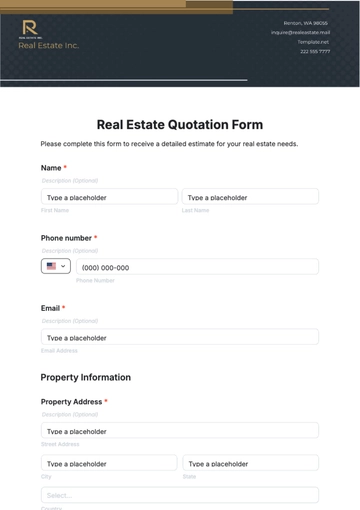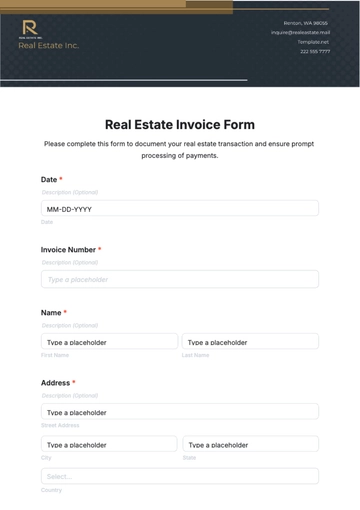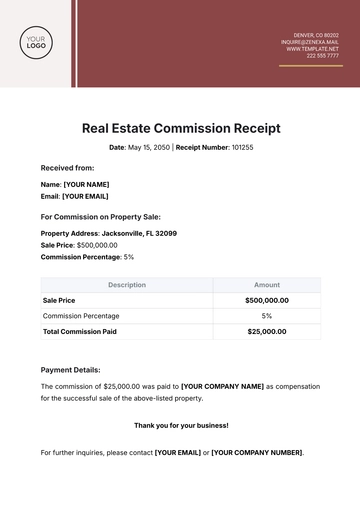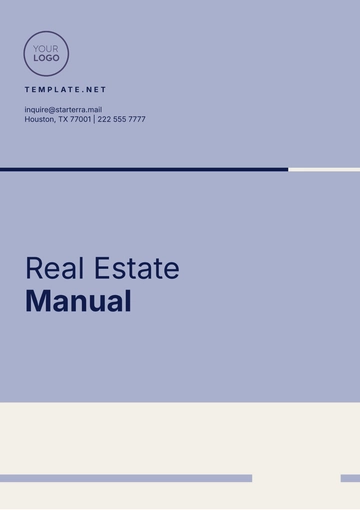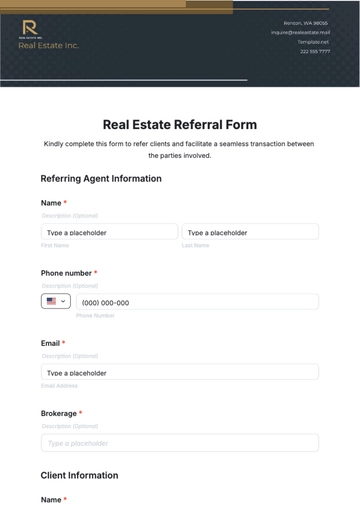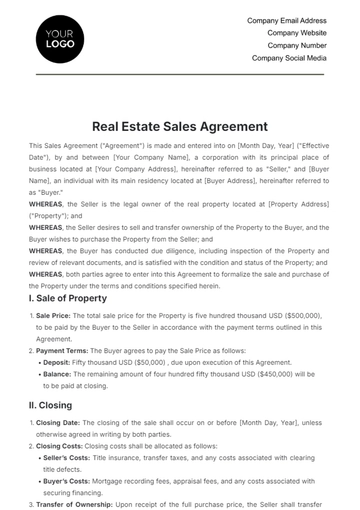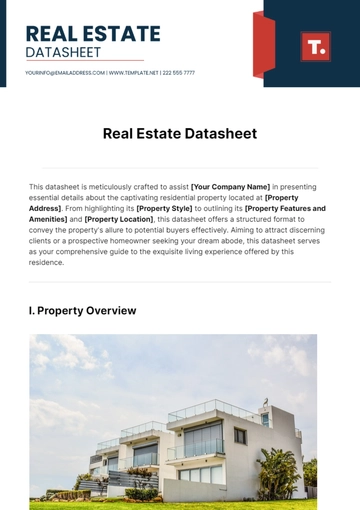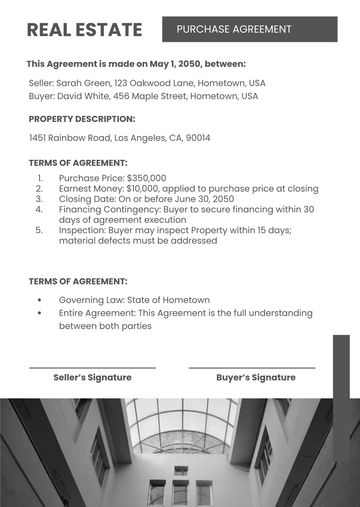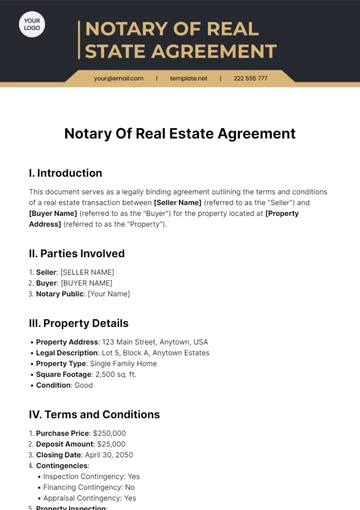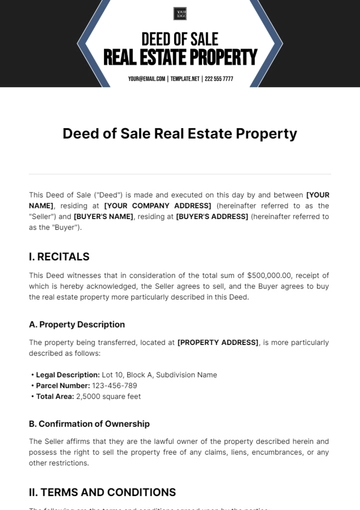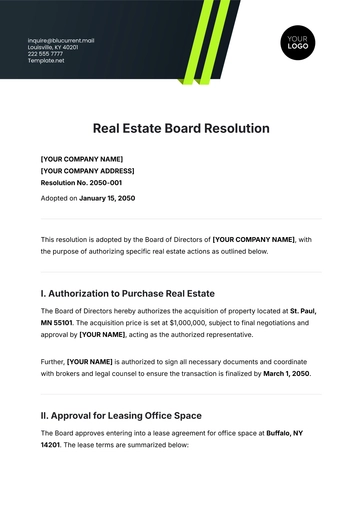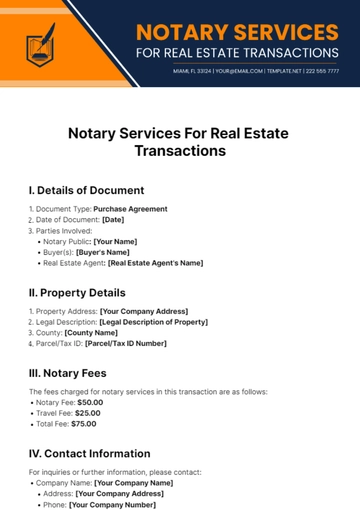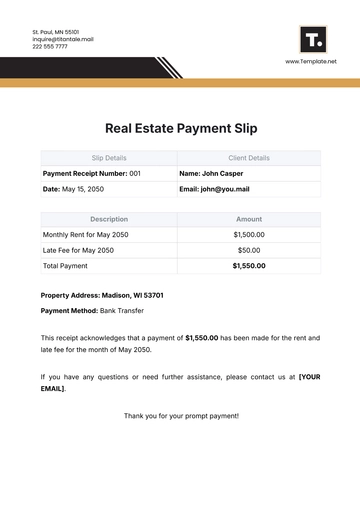Free Real Estate Sustainable Property Management Guide
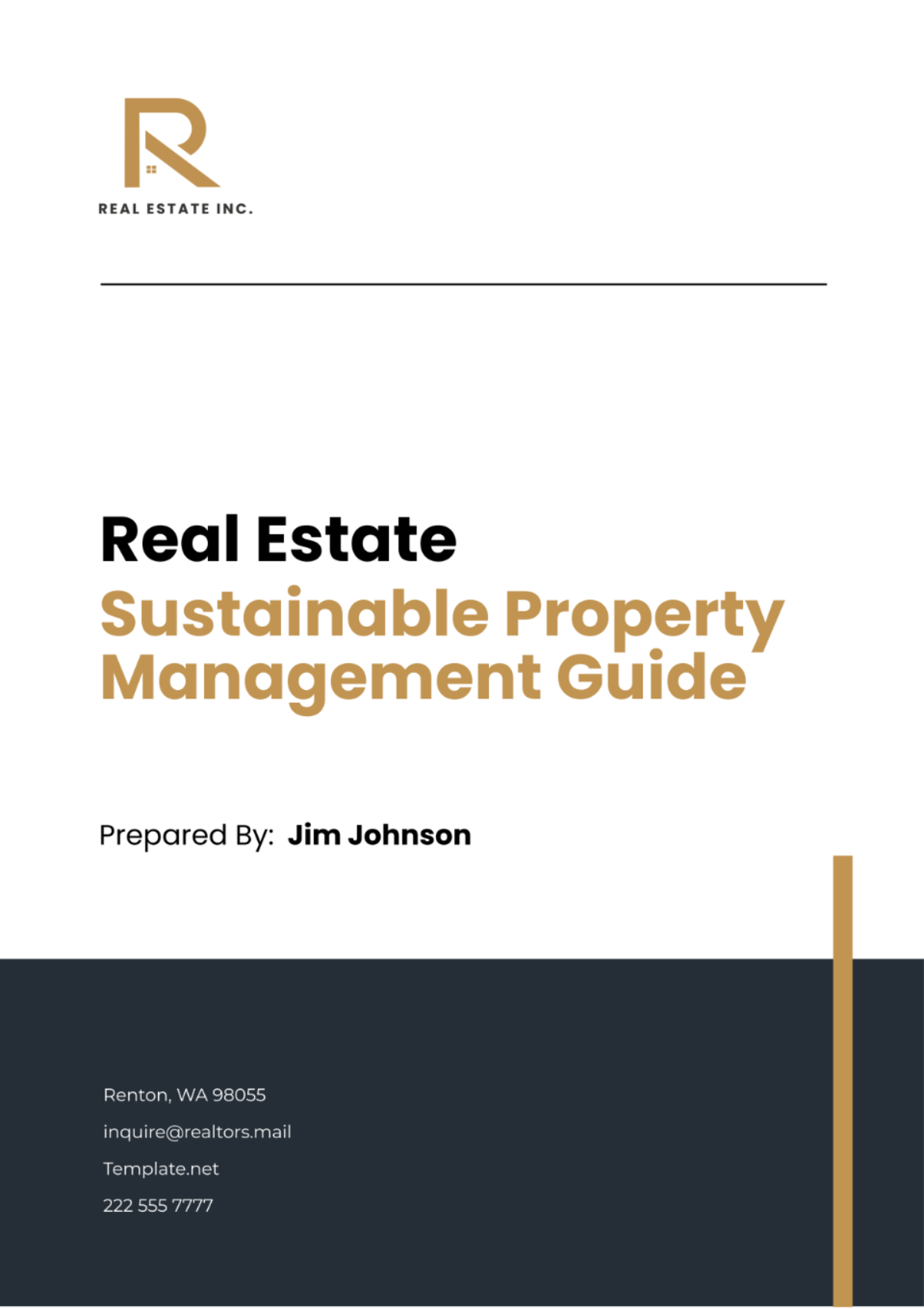
I. Introduction
A. Overview of Sustainable Property Management
Sustainable property management involves the implementation of practices and strategies aimed at reducing the environmental impact of real estate operations while promoting social responsibility and economic viability. By integrating sustainability principles into property management, owners and managers can enhance asset value, improve tenant satisfaction, and contribute to a healthier planet.
Importance of Sustainable Practices in Real Estate
Sustainable property management is becoming increasingly important in the real estate industry due to several key factors:
Factors Driving Importance of Sustainable Practices |
|---|
Environmental Concerns: Rising awareness of climate change and resource depletion necessitates the adoption of sustainable practices to mitigate environmental impact. |
Regulatory Requirements: Government regulations and building codes increasingly mandate energy efficiency and environmental performance standards, requiring compliance from property owners and managers. |
Market Demand: Tenants, investors, and consumers are placing greater emphasis on sustainability, preferring properties that prioritize energy efficiency, water conservation, and eco-friendly features. |
Cost Savings: Implementing sustainable practices can lead to significant cost savings through reduced energy consumption, water usage, and waste generation, resulting in lower operating expenses and increased profitability. |
Corporate Social Responsibility: Companies are recognizing the importance of corporate social responsibility (CSR) and are seeking properties managed in a socially and environmentally responsible manner to align with their values and attract stakeholders. |
Benefits of Implementing Sustainable Property Management
The adoption of sustainable property management practices offers a wide range of benefits:
Benefits of Sustainable Property Management |
|---|
Environmental Preservation: Reducing energy consumption, water usage, and waste generation helps conserve natural resources, minimize pollution, and protect ecosystems. |
Cost Reduction: Implementing energy-efficient measures and water conservation strategies can lead to lower utility bills and operational expenses, increasing profitability for property owners and managers. |
Enhanced Property Value: Properties with sustainable features and certifications often command higher rental rates and property values due to increased desirability among tenants and investors. |
Improved Tenant Satisfaction: Providing a healthy, comfortable, and environmentally friendly environment enhances tenant satisfaction, reduces turnover rates, and fosters positive relationships with occupants. |
Regulatory Compliance: Adhering to environmental regulations and green building standards reduces the risk of fines, penalties, and legal liabilities associated with non-compliance. |
Competitive Advantage: Differentiating properties through sustainability initiatives can attract environmentally conscious tenants, investors, and partners, giving owners and managers a competitive edge in the market. |
Objectives of the Guide
The primary objectives of this guide are to:
Provide property owners, managers, and stakeholders with practical guidance and resources for implementing sustainable property management practices.
Raise awareness about the importance of sustainability in real estate and its potential benefits for property performance, occupant well-being, and environmental stewardship.
Offer actionable strategies and best practices for assessing property sustainability, developing sustainability plans, and monitoring performance to drive continuous improvement.
Facilitate compliance with relevant laws, regulations, and industry standards related to sustainability in property management.
Promote collaboration, knowledge sharing, and innovation within the real estate industry to advance the adoption of sustainable practices and drive positive change.
II. Understanding Sustainable Property Management
A. Definition of Sustainable Property Management
Sustainable property management encompasses the integration of environmental, social, and economic considerations into the planning, development, operation, and maintenance of real estate assets. It involves adopting holistic approaches to minimize resource consumption, reduce environmental impact, promote social equity, and optimize financial performance throughout the property lifecycle.
Key Principles of Sustainability in Real Estate
The following key principles guide sustainable property management practices:
Principles of Sustainability in Real Estate |
|---|
Environmental Responsibility: Minimize resource depletion, pollution, and environmental degradation by implementing energy-efficient technologies, sustainable materials, and conservation measures. |
Social Equity: Foster inclusivity, health, and well-being by providing safe, healthy, and accessible environments for occupants, employees, and communities, addressing social issues such as affordability, diversity, and accessibility. |
Economic Viability: Achieve financial stability and long-term profitability by optimizing operational efficiency, reducing operating costs, enhancing asset value, and mitigating risks through sustainable investment and management strategies. |
Stakeholder Engagement: Engage stakeholders, including tenants, investors, employees, suppliers, and communities, in decision-making processes, communication, and collaboration to foster transparency, accountability, and shared value creation. |
Resilience and Adaptability: Anticipate and mitigate risks posed by climate change, natural disasters, and other external shocks by designing resilient, adaptable, and future-proof properties that can withstand environmental and socioeconomic challenges. |
Integration of Environmental, Social, and Economic Factors
Sustainable property management requires a balanced approach that considers the interconnectedness of environmental, social, and economic factors:
Environmental Factors: Focus on reducing energy consumption, water usage, greenhouse gas emissions, and waste generation through energy-efficient building design, renewable energy integration, water conservation measures, waste reduction, recycling programs, and sustainable landscaping practices.
Social Factors: Prioritize occupant health, comfort, and well-being by promoting indoor air quality, daylighting, thermal comfort, noise reduction, access to green spaces, active transportation options, and amenities that enhance quality of life and community engagement.
Economic Factors: Optimize financial performance by minimizing operating expenses, maximizing energy and water savings, increasing rental income, attracting premium tenants, securing green financing, accessing incentives and rebates, and enhancing asset value through sustainable building certifications and market differentiation.
Role of Stakeholders in Sustainable Property Management
Stakeholder engagement is essential for the successful implementation of sustainable property management practices:
Property Owners and Managers: Assume responsibility for setting sustainability goals, implementing initiatives, allocating resources, and measuring performance to achieve environmental, social, and economic objectives while ensuring compliance with regulations and standards.
Tenants and Occupants: Play a crucial role in conserving resources, reducing energy and water consumption, minimizing waste generation, and adopting sustainable behaviors through awareness, education, participation in programs, and feedback mechanisms.
Investors and Financial Institutions: Influence investment decisions by considering sustainability criteria, performance metrics, and certification requirements to assess risk, enhance returns, and align investments with environmental, social, and governance (ESG) principles.
Government and Regulatory Bodies: Enact policies, regulations, incentives, and programs to promote sustainable development, regulate building performance, encourage green building practices, and address climate change mitigation and adaptation strategies.
Industry Associations and Organizations: Provide guidance, resources, training, certification programs, and networking opportunities to support the adoption of sustainable practices, foster collaboration, share best practices, and advance knowledge and innovation within the real estate industry.
III. Planning for Sustainable Property Management
A. Assessing Property Sustainability
Before implementing sustainable practices, it's crucial to assess the current state of the property's sustainability performance. This involves conducting thorough audits and assessments to identify areas for improvement and establish baseline metrics for tracking progress.
Conducting Energy Audits and Assessments
Energy audits are comprehensive evaluations of a property's energy usage, efficiency, and performance. They typically involve:
Reviewing utility bills and historical energy consumption data.
Inspecting building systems, equipment, and infrastructure.
Identifying energy-saving opportunities and recommending efficiency measures.
Estimating potential energy and cost savings from implementation.
Evaluating Water Usage and Efficiency
Assessing water usage and efficiency helps identify opportunities to conserve water and reduce consumption. This may include:
Reviewing water bills and analyzing usage patterns.
Inspecting plumbing fixtures, irrigation systems, and landscaping.
Identifying leaks, inefficiencies, and water-wasting practices.
Recommending upgrades, retrofits, and behavior changes to improve efficiency.
Analyzing Waste Management Practices
Waste audits assess the types and quantities of waste generated by a property and identify opportunities for waste reduction, recycling, and diversion. This involves:
Analyzing waste streams, composition, and disposal methods.
Identifying sources of waste generation and inefficiencies.
Implementing recycling programs, composting initiatives, and waste reduction strategies.
Educating tenants and staff on proper waste management practices and recycling guidelines.
B. Developing a Sustainability Strategy
Based on the findings of the sustainability assessments, property owners and managers can develop a comprehensive sustainability strategy tailored to their unique goals, priorities, and resource constraints.
Setting Sustainable Goals and Targets
Establishing clear, measurable, and achievable sustainability goals is essential for guiding decision-making and tracking progress. Goals may include:
Reducing energy consumption by [20%] within [5] years.
Decreasing water usage by [30%] over the next [3] years.
Diverting [50%] of waste from landfill through recycling and composting by [year].
Creating Action Plans for Energy Efficiency
Action plans outline specific initiatives, projects, and timelines for improving energy efficiency and reducing energy costs. Key components of action plans may include:
Upgrading lighting systems to energy-efficient LED fixtures.
Installing programmable thermostats and energy management systems.
Retrofitting building envelope and HVAC systems for better insulation and performance.
Implementing occupancy sensors, smart controls, and demand-response strategies to optimize energy usage.
Implementing Water Conservation Measures
Water conservation plans identify strategies and technologies for reducing water consumption, promoting water efficiency, and minimizing water-related costs. Actions may include:
Installing low-flow faucets, showerheads, and toilets to reduce water usage.
Retrofitting irrigation systems with drip irrigation and smart controllers.
Harvesting rainwater for landscape irrigation and non-potable uses.
Implementing water-efficient landscaping practices, such as xeriscaping and native plantings.
Establishing Waste Reduction Programs
Waste reduction plans focus on minimizing waste generation, increasing recycling rates, and promoting sustainable waste management practices. Initiatives may include:
Providing recycling bins and composting facilities for tenants and employees.
Conducting waste audits to identify opportunities for source reduction and recycling.
Partnering with waste haulers and recycling vendors to optimize collection and processing.
Educating tenants, staff, and contractors on proper waste sorting, disposal, and recycling procedures.
IV. Implementing Sustainable Practices
A. Energy Efficiency
Improving energy efficiency is a cornerstone of sustainable property management, offering significant cost savings and environmental benefits. Key strategies for enhancing energy efficiency include:
Installing Energy-Efficient Lighting Systems
LED lighting fixtures use [75%] less energy than traditional incandescent bulbs and have a longer lifespan, reducing maintenance costs and replacement frequency. Retrofitting existing lighting systems with LEDs can yield substantial energy savings and improve lighting quality.
Upgrading HVAC Systems for Better Performance
Heating, ventilation, and air conditioning (HVAC) systems account for a significant portion of a property's energy consumption. Upgrading to high-efficiency HVAC equipment, implementing zoning controls, optimizing airflow, and scheduling regular maintenance can reduce energy usage and improve occupant comfort.
Implementing Renewable Energy Sources (Solar, Wind)
Integrating renewable energy sources such as solar photovoltaic (PV) panels and wind turbines can further reduce reliance on fossil fuels and lower greenhouse gas emissions. Property owners can generate clean, renewable energy onsite, offsetting electricity costs and earning incentives through net metering and renewable energy credits.
V. Sustainable Landscaping and Maintenance
A. Designing Sustainable Landscapes
Sustainable landscaping plays a vital role in enhancing the environmental performance and aesthetic appeal of properties. By incorporating native plants, water-efficient irrigation systems, and eco-friendly maintenance practices, property owners can create landscapes that promote biodiversity, conserve water, and minimize environmental impact.
Selecting Native and Drought-Tolerant Plants
Native plants are well-adapted to local climate conditions and soil types, requiring less water, fertilizer, and maintenance than exotic species. When designing landscapes, prioritize the use of native and drought-tolerant plants to reduce water consumption, support local ecosystems, and enhance resilience to drought and climate change.
Implementing Permeable Surfaces for Water Infiltration
Permeable surfaces, such as permeable pavers, porous asphalt, and gravel, allow rainwater to infiltrate into the soil instead of running off into storm drains. By reducing runoff and promoting groundwater recharge, permeable surfaces help prevent soil erosion, minimize flooding, and improve water quality in nearby water bodies.
Creating Wildlife Habitats on Property
Designing landscapes to provide food, shelter, and nesting habitats for native wildlife species contributes to biodiversity conservation and ecosystem health. Incorporate features such as birdhouses, bat boxes, pollinator gardens, and wildlife corridors to attract beneficial insects, birds, and other wildlife to the property.
B. Sustainable Maintenance Practices
Maintaining landscapes in a sustainable manner involves using environmentally friendly practices and minimizing the use of chemicals, pesticides, and synthetic fertilizers. By adopting organic landscaping techniques, reducing water usage, and promoting soil health, property managers can create healthy, vibrant landscapes while protecting human health and the environment.
Using Eco-Friendly Cleaning Products
Replace conventional cleaning products containing harmful chemicals with environmentally friendly alternatives that are biodegradable, non-toxic, and safe for human health and the environment. Choose cleaning products certified by reputable eco-labels, such as Green Seal or EcoLogo, to ensure their sustainability credentials.
Adopting Integrated Pest Management Techniques
Integrated Pest Management (IPM) combines biological, cultural, physical, and chemical control methods to manage pests effectively while minimizing risks to human health and the environment. Implement preventive measures, such as proper sanitation, habitat modification, and pest exclusion, before resorting to chemical pesticides.
Maintaining Efficient Irrigation Systems
Efficient irrigation practices help conserve water, prevent water waste, and promote healthy plant growth. Install weather-based irrigation controllers, drip irrigation systems, and soil moisture sensors to deliver water directly to plant roots, minimize evaporation, and adjust watering schedules based on weather conditions and plant needs.
VI. Monitoring and Reporting
A. Tracking Sustainability Metrics
Monitoring sustainability metrics allows property owners and managers to assess the effectiveness of their sustainability initiatives, track progress towards goals, and identify areas for improvement. Key performance indicators (KPIs) related to energy, water, waste, and indoor environmental quality can help measure the impact of sustainable practices and guide decision-making.
Monitoring Energy Consumption and Cost Savings
Track energy usage, utility bills, and cost savings resulting from energy efficiency measures to evaluate the effectiveness of energy management initiatives. Use energy management software, sub metering systems, and utility tracking tools to monitor energy consumption in real time and identify opportunities for optimization.
Tracking Water Usage and Conservation Efforts
Monitor water meter readings, usage trends, and conservation efforts to assess the impact of water-saving measures and identify leaks or inefficiencies. Implement water monitoring systems, smart meters, and flow sensors to measure water usage accurately and identify areas for improvement.
Measuring Waste Diversion Rates
Calculate waste diversion rates by quantifying the amount of waste recycled, composted, or diverted from landfill compared to total waste generated. Use waste tracking software, waste audits, and waste characterization studies to analyze waste streams, identify opportunities for diversion, and optimize recycling and composting programs.
B. Reporting and Communication
Regular reporting and communication are essential for sharing sustainability achievements, engaging stakeholders, and fostering transparency and accountability. Property owners and managers can use various channels and formats to communicate sustainability efforts and outcomes effectively.
Creating Sustainability Reports for Stakeholders
Produce annual sustainability reports or performance dashboards to communicate key sustainability metrics, goals, accomplishments, and challenges to stakeholders, including tenants, investors, regulators, and community members. Use clear, concise language and visual aids to convey complex information and highlight progress towards targets.
Engaging Tenants and Employees in Sustainable Practices
Educate tenants, employees, and contractors about sustainable practices and encourage their participation in energy conservation, water efficiency, waste reduction, and green commuting initiatives. Provide sustainability training, workshops, newsletters, and interactive tools to raise awareness and empower stakeholders to take action.
Promoting Achievements Through Marketing Channels
Highlight sustainability achievements and certifications through marketing channels, such as websites, social media, press releases, and promotional materials, to attract environmentally conscious tenants, investors, and partners. Showcase green building features, energy-saving technologies, and community initiatives to differentiate the property and enhance its market appeal.
VII. Continuous Improvement
A. Evaluating Performance
Regular evaluation of sustainability performance is essential to ensure ongoing improvement and alignment with organizational goals. Property owners and managers should conduct systematic assessments, gather feedback, and analyze data to identify strengths, weaknesses, and opportunities for enhancement.
Conducting Regular Audits and Assessments
Schedule periodic energy audits, water assessments, waste audits, and indoor environmental quality evaluations to benchmark performance, identify trends, and detect anomalies. Engage qualified professionals or use specialized tools and software to conduct comprehensive assessments and identify areas for improvement.
Identifying Areas for Improvement
Review audit findings, performance metrics, and stakeholder feedback to prioritize areas for improvement and develop action plans. Focus on addressing deficiencies, implementing best practices, and seizing opportunities to enhance sustainability performance while maximizing return on investment.
Soliciting Feedback from Tenants and Stakeholders
Seek input from tenants, employees, contractors, and community members through surveys, focus groups, and suggestion boxes to gather insights, perspectives, and suggestions for improving sustainability initiatives. Use feedback to identify challenges, address concerns, and tailor strategies to meet stakeholder needs and expectations.
B. Implementing Updates and Innovations
Continuously seek opportunities to innovate, optimize processes, and incorporate emerging technologies and best practices into sustainable property management efforts. Stay informed about industry trends, research findings, and technological advancements to drive continuous improvement and maintain competitiveness.
Investing in Emerging Technologies for Sustainability
Explore innovative technologies, such as smart building systems, Internet of Things (IoT) devices, and artificial intelligence (AI) algorithms, to optimize energy efficiency, automate operations, and enhance occupant comfort and satisfaction. Pilot new technologies, evaluate their effectiveness, and scale successful solutions across the portfolio.
Updating Sustainability Plans Based on Findings
Review and revise sustainability plans based on performance data, feedback from stakeholders, and changes in regulations, market conditions, and technological advancements. Set new goals, adjust strategies, and reallocate resources as needed to address evolving priorities and challenges.
Staying Abreast of Industry Best Practices and Trends
Engage with industry associations, attend conferences, and participate in professional development opportunities to stay informed about emerging trends, best practices, and benchmarking standards in sustainable property management. Collaborate with peers, share lessons learned, and contribute to advancing sustainability within the industry.
VIII. Conclusion
A. Recap of Key Points
Sustainable property management is essential for reducing environmental impact, enhancing property value, and meeting the needs of tenants, investors, and communities. By integrating sustainability principles into planning, operations, and maintenance, property owners and managers can achieve economic, environmental, and social benefits.
B. Importance of Sustainable Property Management for Future Generations
The decisions made today regarding property management practices will have long-lasting implications for future generations. Embracing sustainability not only preserves natural resources and mitigates climate change but also creates healthier, more resilient communities and a more sustainable built environment for future inhabitants.
C. Encouragement for Continued Commitment to Sustainability
As stewards of the built environment, property owners and managers have a responsibility to prioritize sustainability and lead by example. By demonstrating leadership, fostering innovation, and collaborating with stakeholders, the real estate industry can drive positive change and build a more sustainable future for all.
- 100% Customizable, free editor
- Access 1 Million+ Templates, photo’s & graphics
- Download or share as a template
- Click and replace photos, graphics, text, backgrounds
- Resize, crop, AI write & more
- Access advanced editor
Promote sustainable property management practices with the Real Estate Sustainable Property Management Guide Template from Template.net. This editable and customizable guide offers insights and strategies to minimize environmental impact and maximize efficiency. Tailor it to your needs using our Ai Editor Tool for a personalized approach. Foster sustainability and enhance your property management efforts today.

